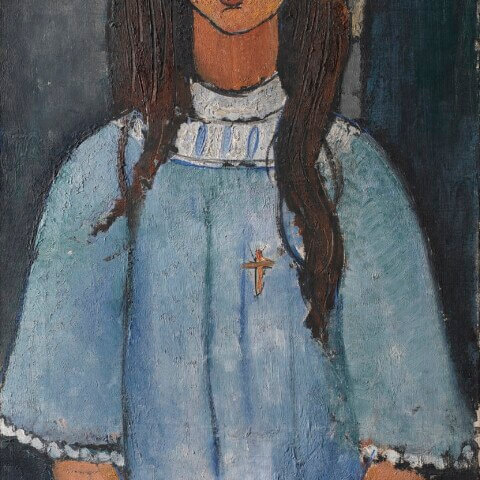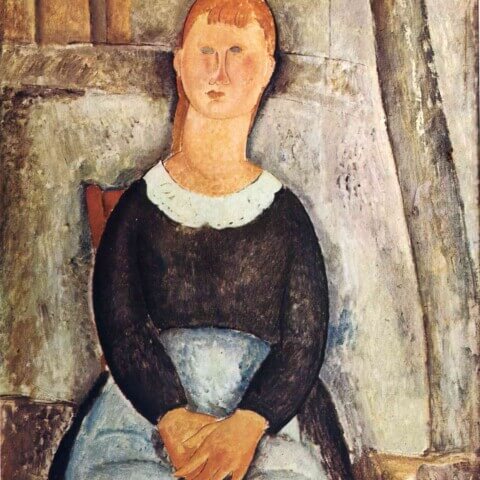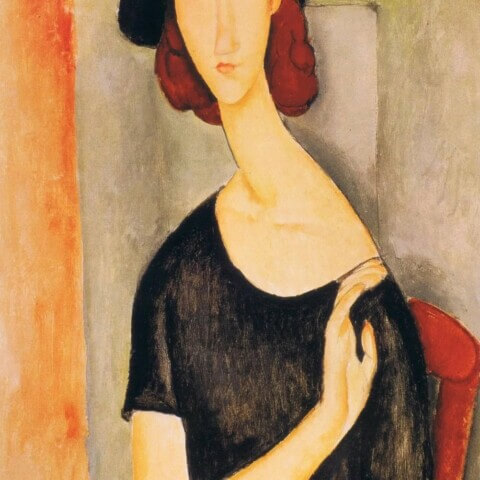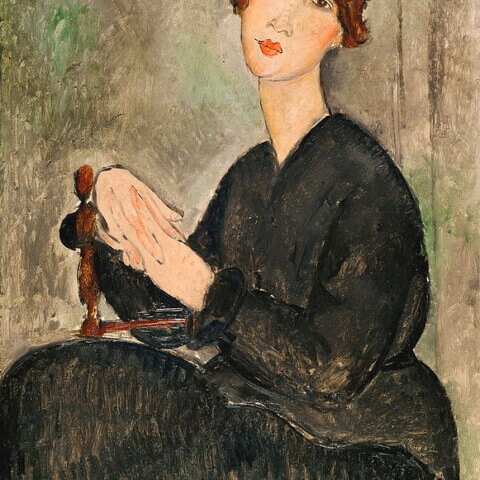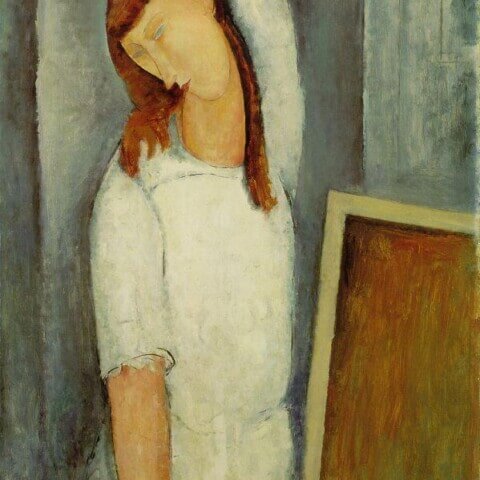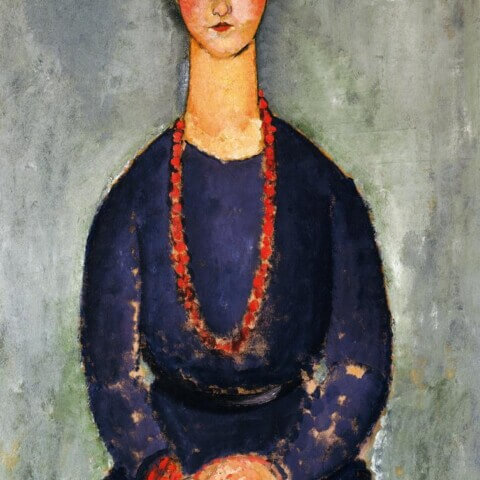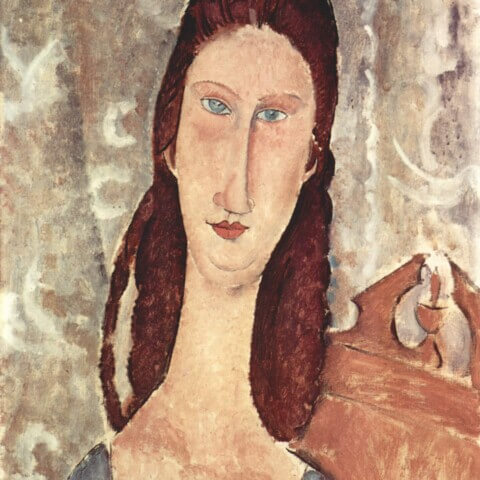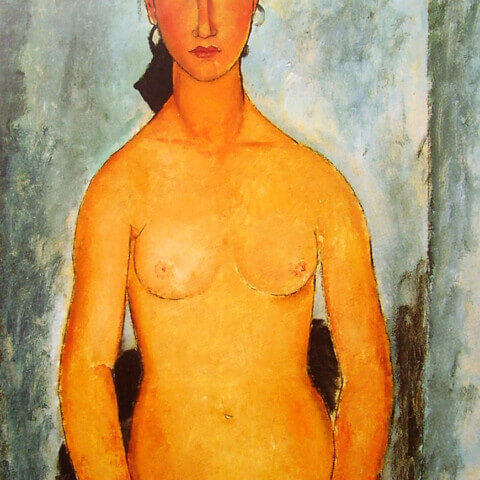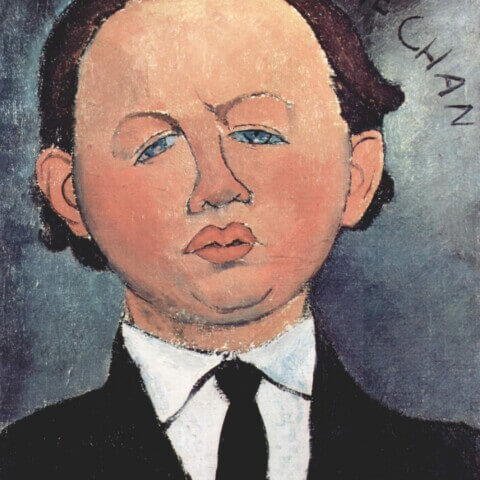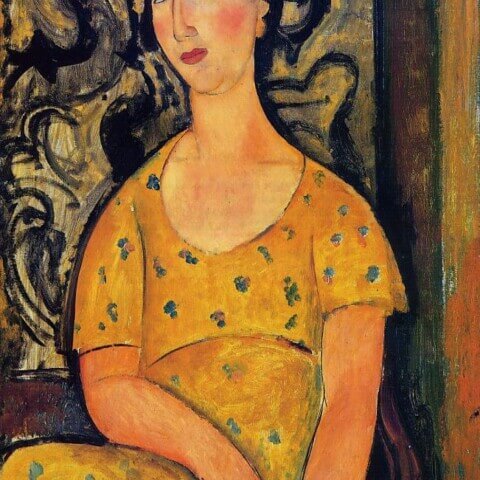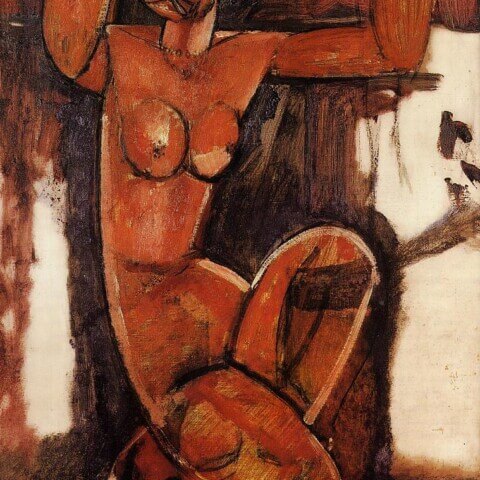Amedeo Modigliani
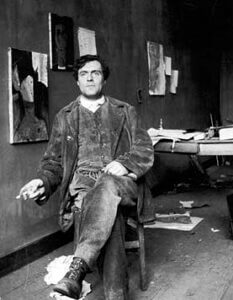
Amedeo Modigliani (July 12, 1884 – January 24, 1920) was an Italian-Jewish painter and sculptor known for his distinctive style that blended modern and classical elements. Modigliani is best known for his elongated, melancholic portrayals of people, characterized by swan-like necks, oval faces, and vacant, almond-shaped eyes.
Modigliani was born in Livorno, Italy, into a Sephardic Jewish family that fell into financial hardship. Plagued by health problems from a young age, including pleurisy and typhoid, he sought solace in art. Despite his fragile health, he managed to attend the Free School of Nude Studies in Florence in 1902 and later moved to Venice to continue his artistic education.
In 1906, he moved to Paris, the epicenter of avant-garde art at the time. He became part of the bohemian community of artists in Montmartre, and later in Montparnasse, engaging with the likes of Pablo Picasso, Constantin Brâncuși, and Max Jacob. However, Modigliani’s work remained distinctive even among the innovative works of his contemporaries.
His unique style often fused elements of contemporary art movements like Cubism with the influences of African and Cycladic sculptures. Modigliani’s series of nudes, created around 1917, is one of his most acclaimed works, distinguished by their candid eroticism.
Sadly, Modigliani’s life was cut short at the age of 35 due to tubercular meningitis, exacerbated by poverty, alcoholism, and substance abuse. His lover, Jeanne Hébuterne, pregnant with their second child, committed suicide the following day, a tragic end to their tumultuous relationship.
Despite his short life and limited body of work, Modigliani’s distinctive style has ensured his lasting influence on modern art. Today, his works are held in high esteem and feature prominently in major museums and collections worldwide.

